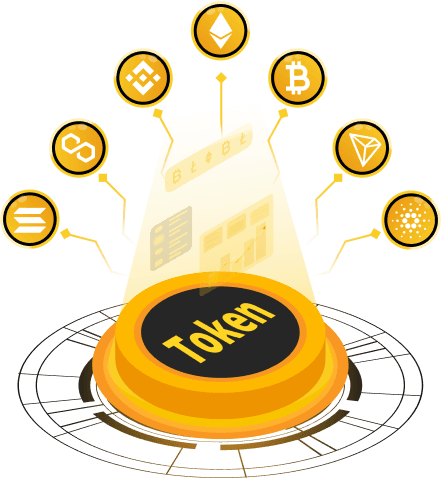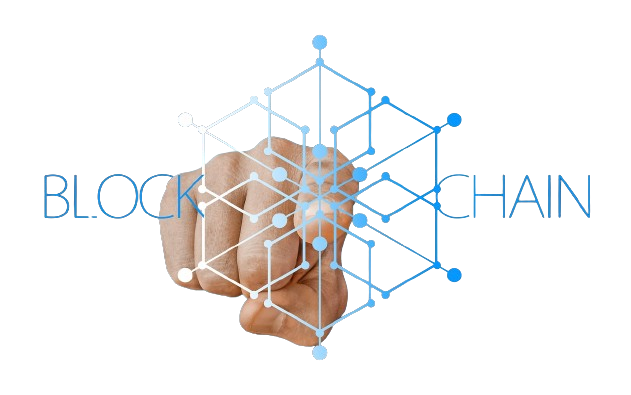Revolutionizing Consensus: How DAGs are Changing Blockchain?
Blockchain technology has come a long way since its early days, with consensus mechanisms playing a crucial role in ensuring that these systems are secure and trustworthy. Initially, we had Proof of Work (PoW) and later Proof of Stake (PoS) both of which have their strengths but also some significant drawbacks. As technology evolves, so does the need for faster, more efficient, and more scalable solutions. That’s where Directed Acyclic Graphs, or DAGs, come into play.
Think of a traditional blockchain as a single highway where all traffic moves in one direction slow and sometimes congested. Now, imagine DAGs as a network of intersecting roads that allow traffic to flow in multiple directions at once, making the whole system faster and more efficient. This evolution is not just theoretical; it’s already impacting how blockchain development company and services are shaping the future.
Unlock Finance's Future with DAG Technology Insights

The Evolution of Consensus Mechanisms
Early Days- Proof of Work and Proof of Stake
When Bitcoin burst onto the scene in 2009, it was nothing short of revolutionary. The technology behind it, known as Proof of Work (PoW), involved miners solving complex puzzles to validate transactions. It was a brilliant idea, but as more people joined the network, the system started to show its flaws mainly in the form of high energy consumption and slower transaction times.
Then came Proof of Stake (PoS), a new way to validate transactions that was less energy-hungry and somewhat faster. Instead of miners, PoS uses validators, people who have a stake in the system. While this method has its perks, it also has some drawbacks, like potentially concentrating power in the hands of those who already hold the most coins. It was clear that while PoS was a step forward, the search for a better solution had to continue, especially as blockchain development services started to push the envelope.
Why We Needed Something New
As more people started using blockchain, the limitations of both PoW and PoS became more apparent. Slow transactions, energy inefficiency, and scalability issues made it clear that a new approach was necessary. Blockchain development company began exploring alternatives, and that’s when DAGs started gaining attention. DAGs offer a fresh take on how transactions are processed, allowing them to happen simultaneously rather than one after the other making the system faster and more scalable.
Directed Acyclic Graphs (DAGs)- A New Way Forward
Breaking Down DAGs
So, what exactly is a DAG? Let’s break it down. Imagine a web where each strand represents a transaction, all connected in a way that’s not linear but rather like a network. In a traditional blockchain, transactions are processed one by one, like cars on a single-lane highway. But in a DAG, multiple transactions can happen at once, similar to traffic flowing through a city with many roads and intersections. This setup allows for quicker processing and more efficiency key benefits that blockchain development services are eager to leverage.
How DAGs Work
Implementing a DAG isn’t just about connecting transactions; it’s about creating a network that’s both secure and efficient. Here’s a simplified look at how it works
- Transactions as a Web- In a DAG, each transaction connects to previous ones, forming a web of sorts. Think of it like a spider’s web, where each new thread strengthens the overall structure. This interconnectedness is what keeps the system secure, which is why blockchain development companies are so interested in DAGs.
- Quick Validation- Instead of waiting for a single miner to validate a block, DAGs allow for multiple transactions to be validated at the same time. It’s like having several toll booths on a highway, allowing traffic to move smoothly without delays. This is a big deal for cryptocurrency development services, which are always looking for ways to speed things up.
- No Central Authority- Unlike traditional blockchains, where consensus is reached globally, DAGs use a more localized approach. Imagine a neighborhood where everyone keeps an eye on things, rather than relying on a single security guard. This decentralized consensus is what makes DAGs unique and why top blockchain development companies are investing in them.
- Data Sharing- Information in a DAG flows freely between nodes, ensuring everyone is on the same page. It’s like news spreading through a community, with everyone quickly getting up to speed. This peer-to-peer sharing makes DAGs resilient, an attractive feature for blockchain development services.
- Built-in Security- DAGs use techniques like multiple confirmations and cryptographic signatures to keep things secure. Think of it like a multi-layered security system in a building each layer adds another level of protection. For cryptocurrency wallet development companies, this security is crucial for earning users’ trust.
DAGs in the Real World- Practical Examples
IOTA and the Tangle
One of the best-known uses of DAG technology is IOTA’s Tangle, designed specifically for the Internet of Things (IoT). Picture a smart city where traffic lights, cars, and sensors are all communicating with each other. The Tangle allows these devices to exchange data and transactions without any fees, making it incredibly efficient and scalable. For instance, in a smart city, the Tangle could help manage traffic in real time, reducing congestion and improving safety. Blockchain development companies are keen to apply this feeless, scalable technology to other industries as well.
Hedera Hashgraph
Hedera Hashgraph is another exciting application of DAGs, using a unique “gossip about gossip” protocol. Imagine a group of people at a party, each sharing what they’ve heard with others. This approach allows Hedera to achieve consensus quickly, making it ideal for applications that require speed and fairness, like financial services. For example, Hedera could be used to process high-speed transactions in the financial sector, where delays can cost millions. Blockchain development services see Hedera’s approach as a promising way to implement fast, reliable solutions.
Other DAG Projects
DAG technology is being explored by several other projects
- Byteball: Byteball’s DAG structure supports feeless transactions and smart contracts, making it perfect for decentralized apps (dApps). Think of it as a marketplace where you can buy and sell without worrying about transaction fees. This efficiency makes Byteball a great example for cryptocurrency development services.
- Nano: Nano’s unique block-lattice structure allows each user to have their own blockchain, enabling fast and feeless transactions. It’s like everyone having their own lane on a highway, moving at their own pace without any interference. Cryptocurrency wallet development companies are taking notice of Nano’s ability to provide a smooth user experience.
- Fantom: Fantom uses a DAG-based protocol to support fast and scalable dApps. It’s designed for real-world applications like supply chain management and finance, where speed and reliability are key. For cryptocurrency exchange development companies, Fantom represents the future of high-throughput, low-latency blockchain solutions.
Unlock Finance's Future with DAG Technology Insights

The Benefits of DAGs
Scalability
DAGs are built to handle more transactions as the network grows, like a city expanding its roads to accommodate more traffic. This scalability is a huge advantage for blockchain development services, which need to ensure that their systems can grow without slowing down.
Efficiency
DAGs don’t require energy-intensive mining, making them far more efficient. It’s like switching from gas-powered cars to electric ones cleaner, faster, and more sustainable. This efficiency is particularly appealing to cryptocurrency wallet development companies looking for cost-effective solutions.
Decentralization
In a DAG, everyone plays a part in validating transactions, reducing the risk of centralization. It’s like having everyone in a community contribute to neighborhood watch, making the system more secure and democratic. Decentralization is a key feature for blockchain development companies, as it aligns with the core values of blockchain technology.
Speed
With DAGs, transactions are confirmed quickly, reducing the time it takes to complete them. This is crucial for real-time applications like payments and gaming, where delays can be frustrating and costly. Blockchain development services are increasingly turning to DAGs to provide faster, more responsive systems.
Flexibility
DAGs are versatile and can be adapted to a wide range of uses, from financial systems to gaming networks. This flexibility is why top blockchain development companies are heavily investing in DAG research and development.
Challenges of DAGs
Security
While DAGs have many advantages, they also come with their own set of challenges, particularly in security. The decentralized validation process can make it harder to detect and prevent attacks, so robust cryptographic techniques are essential. Blockchain development companies are working hard to address these challenges and ensure the security of DAG-based systems.
How can we overcome these challenges? By continuing to innovate and refine the technology, we can make DAGs as secure as they are efficient.
Complexity
DAGs are not as straightforward as traditional blockchains. Implementing them requires a deep understanding of graph theory, cryptography, and distributed systems. This complexity can be a barrier to adoption, as developers need specialized knowledge to build secure and scalable DAGs. Blockchain development services are focusing on training and education to build the necessary expertise.
Lack of Standards
DAGs are still a relatively new technology, and as such, there aren’t yet established standards for how they should be implemented. This can lead to issues with interoperability, making it difficult to integrate DAGs with existing blockchain networks. Blockchain development companies must navigate this lack of standardization to deliver effective solutions.
Adoption Barriers
Despite their potential, DAGs face significant hurdles in achieving widespread adoption. The complexity of implementation, lack of standardization, and limited developer resources all contribute to slower uptake compared to traditional blockchains. Blockchain development companies are working to overcome these barriers, but it will take time for DAGs to reach their full potential.
The Future of DAGs in Blockchain Technology
Innovation Ahead
The world of DAGs is just starting to unfold. As research and development continue, we can expect new solutions to emerge that will address current challenges, paving the way for even more scalable, efficient, and secure systems. Blockchain development companies are leading the charge, driving the next wave of advancements in decentralized technology.
Working Together
One promising direction for DAGs is their integration with traditional blockchains. By combining the strengths of both technologies, we could see hybrid models that offer unparalleled scalability, efficiency, and security. Top blockchain development companies are actively exploring these possibilities.
Expanding Applications
As DAGs mature, we’ll likely see their applications expand beyond just IoT and micropayments. From supply chain management to healthcare data sharing and decentralized finance (DeFi), the potential uses for DAGs are vast. Cryptocurrency wallet development services, for example, could benefit greatly from the enhanced scalability and security that DAGs offer.
Building a Community
For DAGs to succeed, they’ll need strong support from the blockchain community. Building a robust ecosystem with the right tools, resources, and standards will be key to driving adoption and ensuring the long-term success of DAG-based systems. Blockchain development teams will play a crucial role in this process, providing the expertise needed to bring these systems to life.
Empower YOur Project With Top-Tier Blockchain Development

Conclusion
The shift from traditional blockchain consensus mechanisms to DAGs marks a significant evolution in the world of decentralized technology. While DAGs offer solutions to many of the challenges that have plagued blockchains, they also introduce new challenges that need to be addressed. However, the potential benefits of greater scalability, efficiency, and decentralization are undeniable. As the technology continues to evolve, DAGs could very well become the foundation for the next generation of decentralized systems. Blockchain development services, cryptocurrency development services, and the top blockchain development companies will be instrumental in this evolution, shaping the future of how digital transactions are processed and secured.
